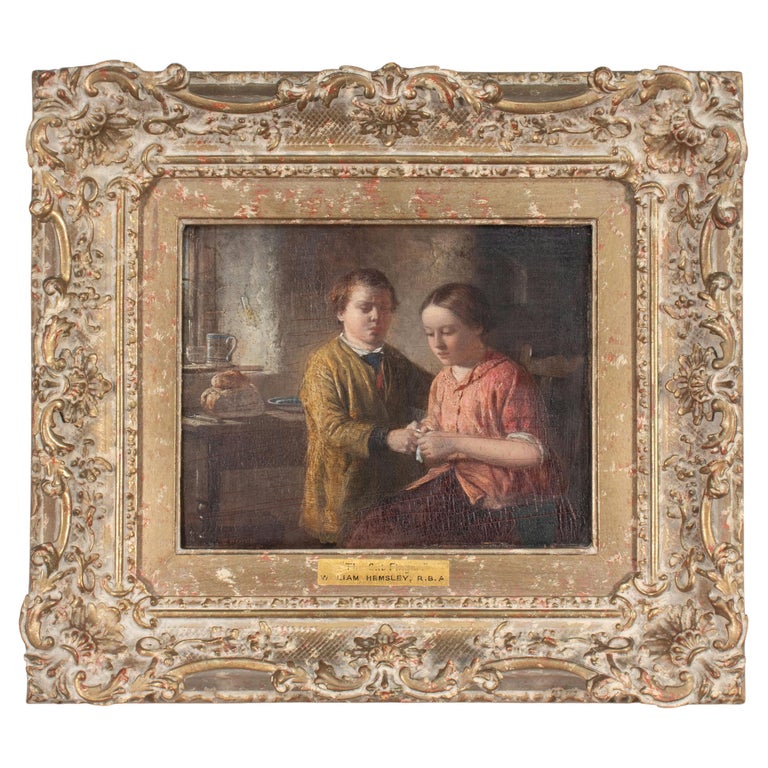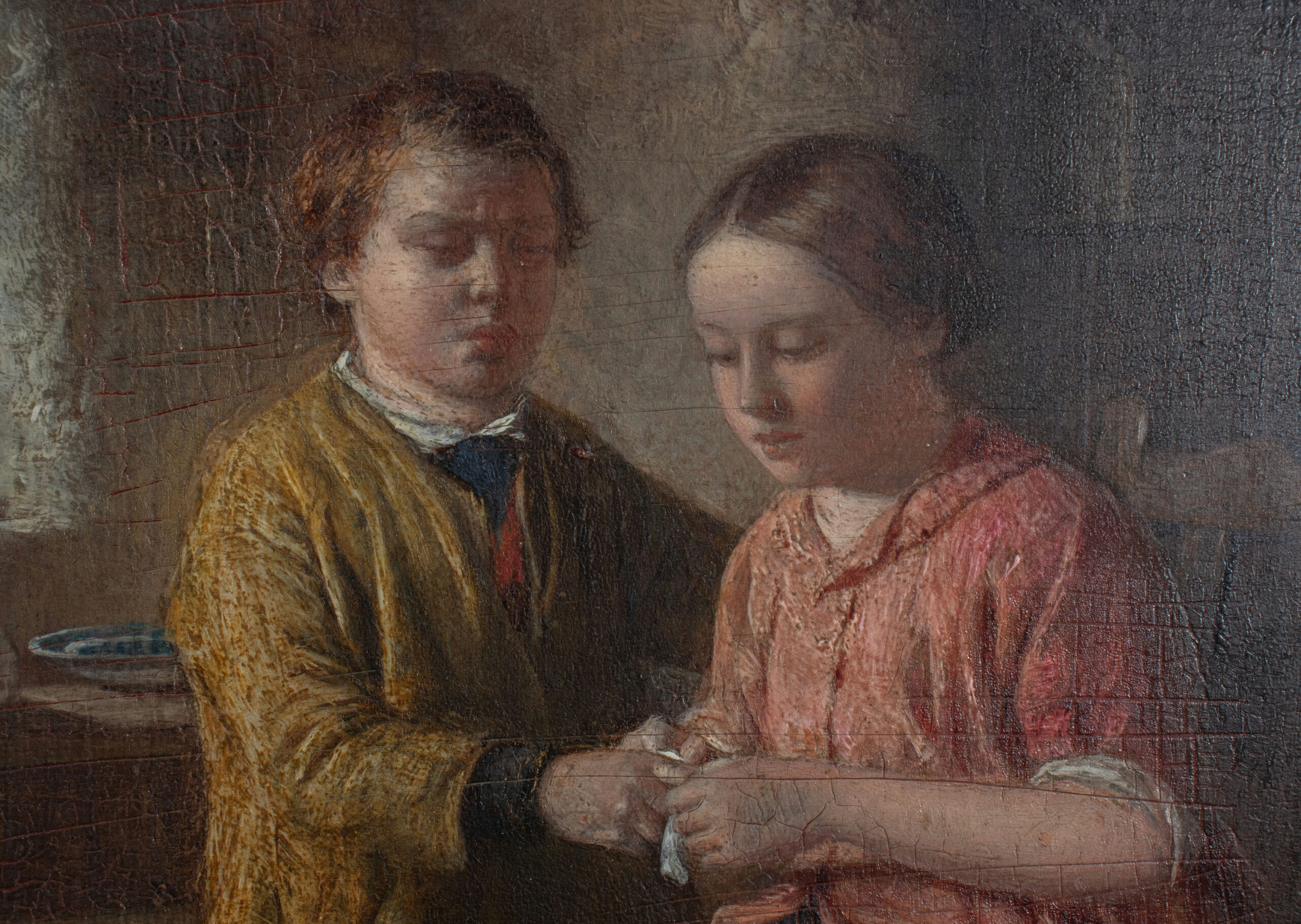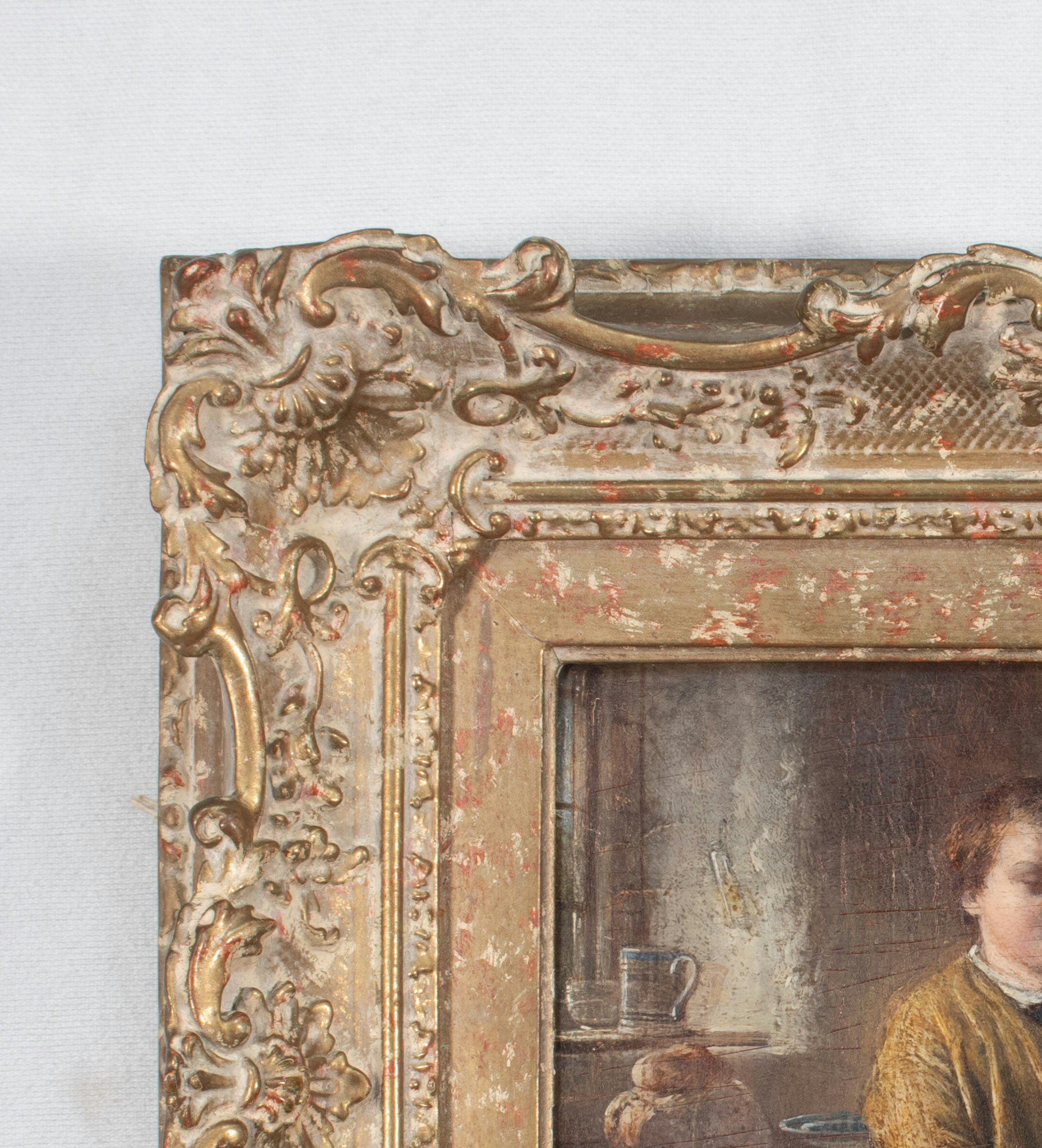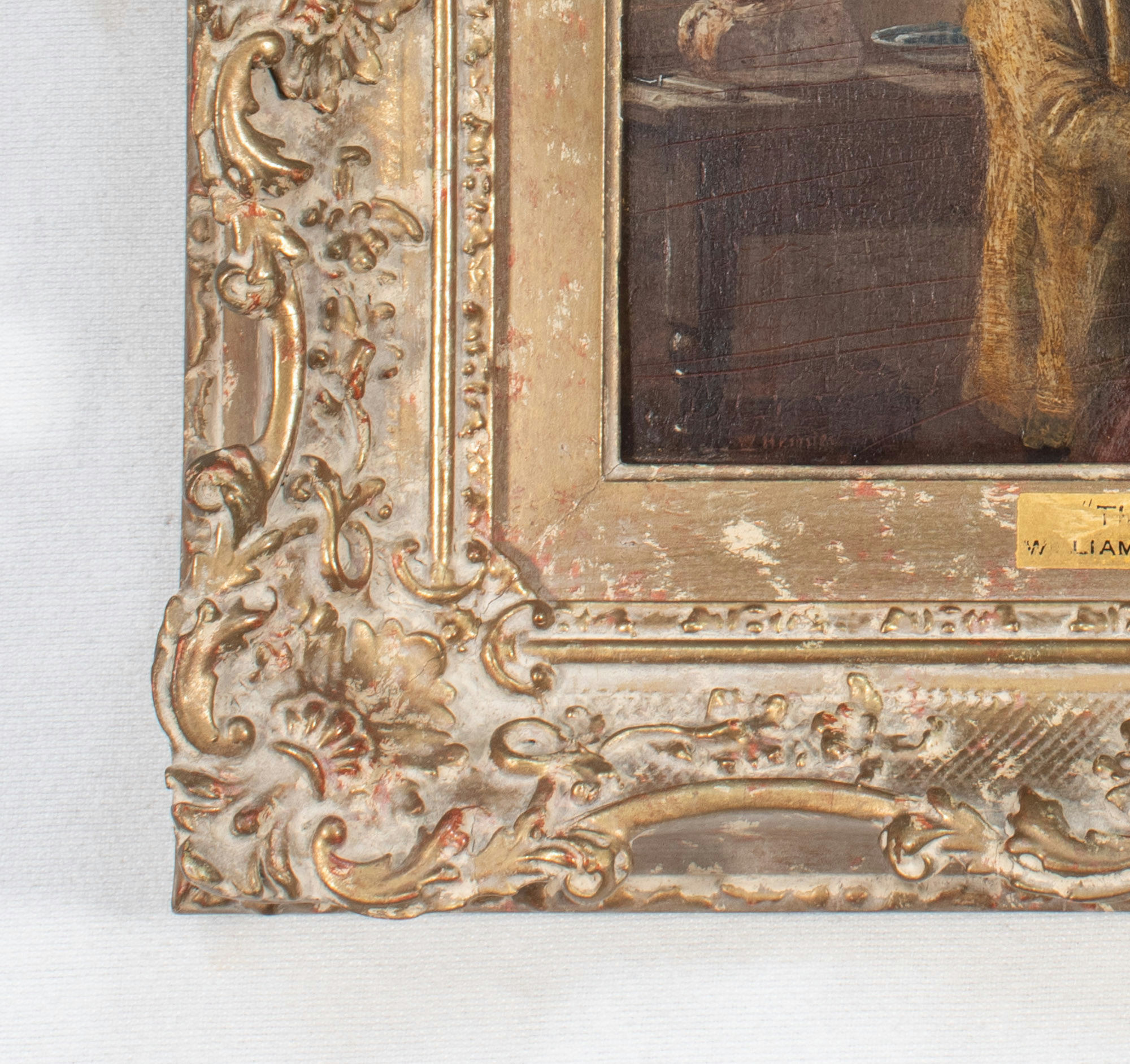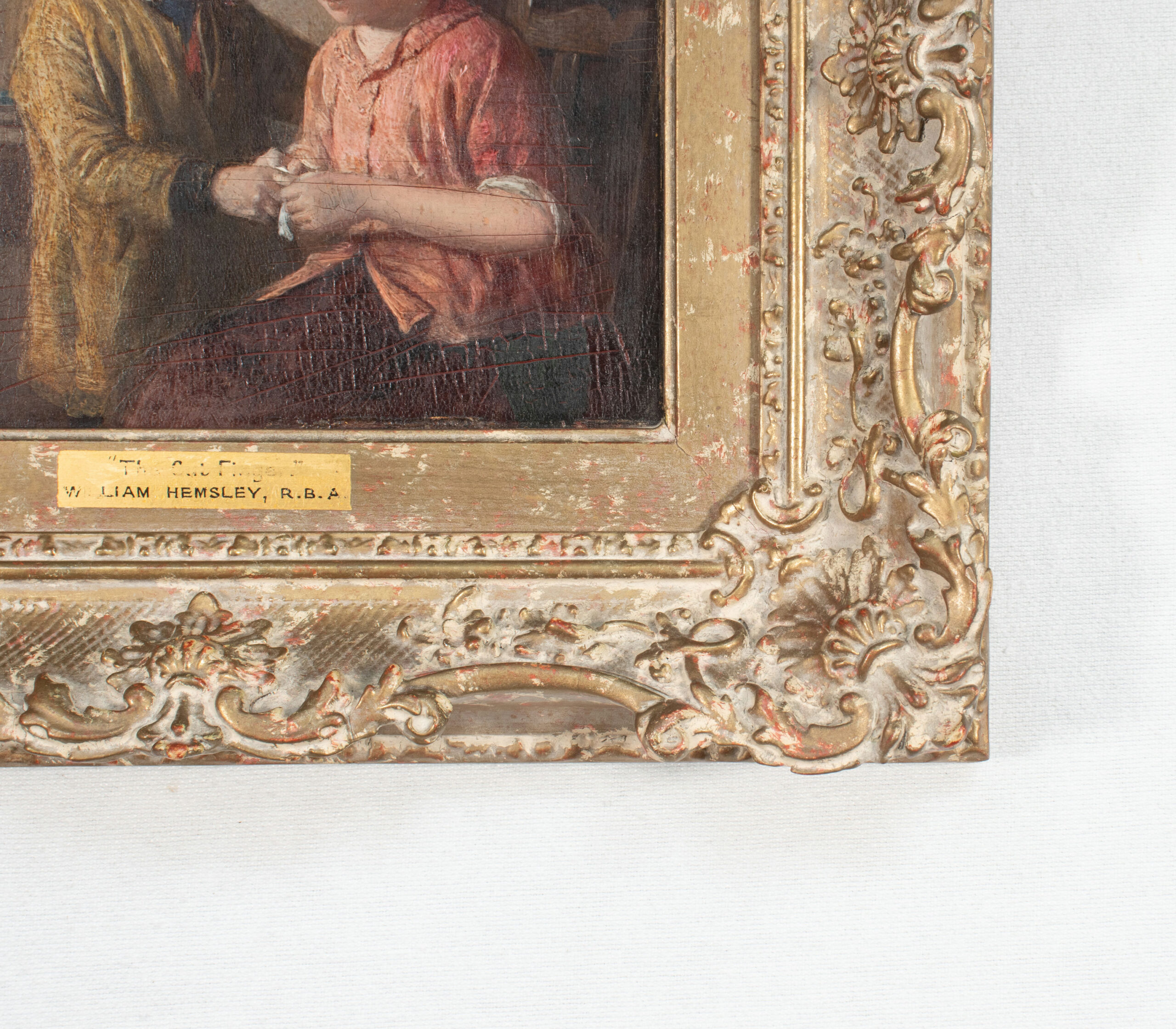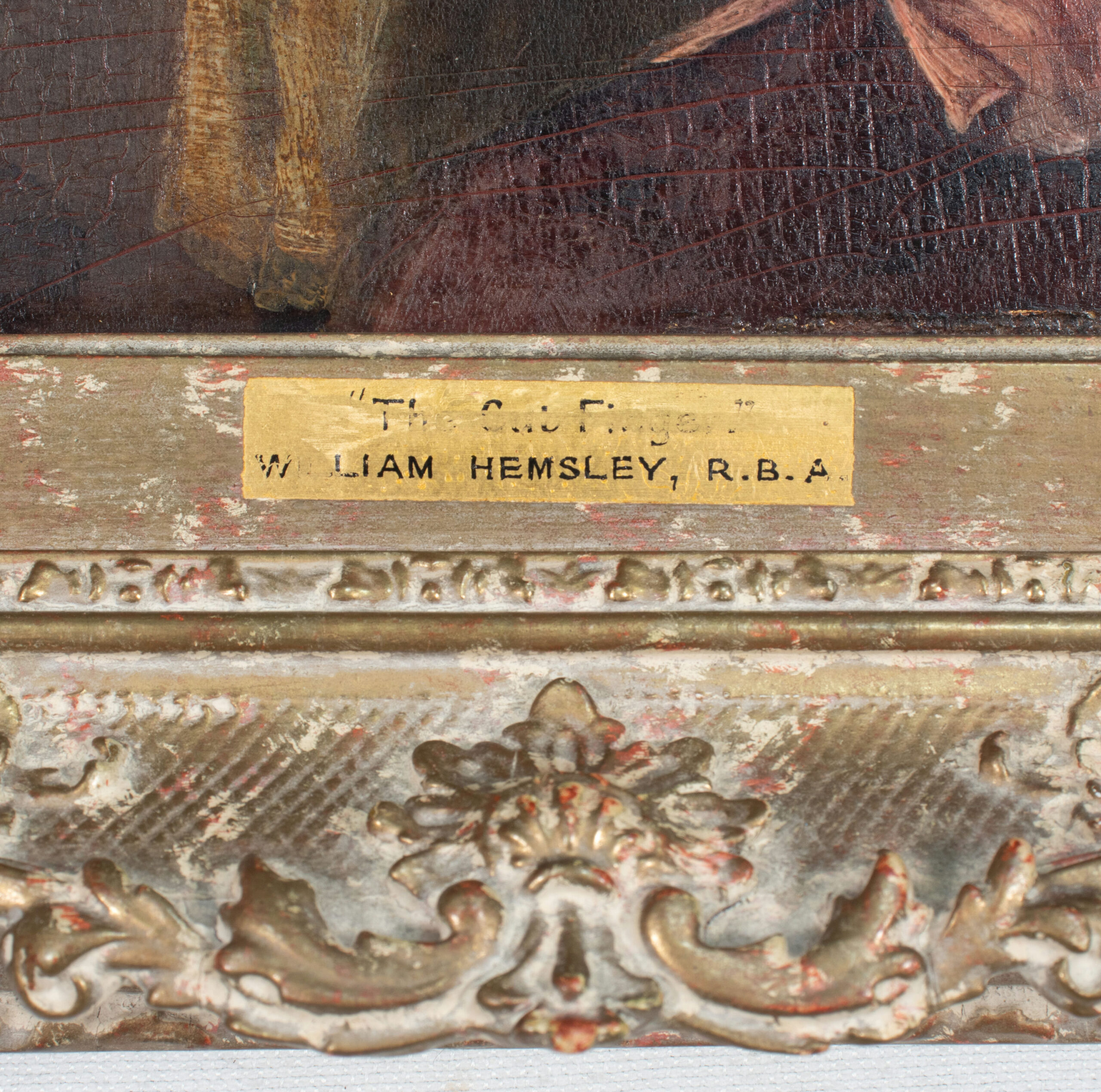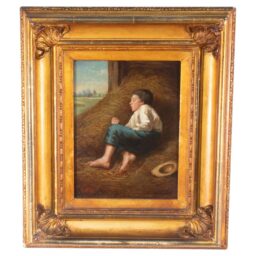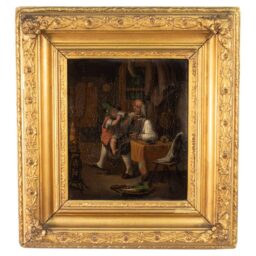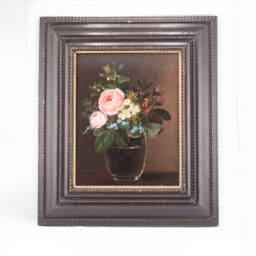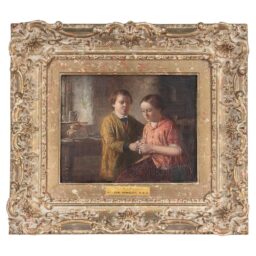Description
This 19th-century oil on mahogany board titled ‘The Cut Finger’ by William Hemsley, R.B.A., depicts a familial pairing in a cottage home. The girl tends to the eponymous cut with a white cloth pressed on the boy’s finger. A dim light is cast from the window to the left, illuminating a cut loaf of bread, a knife, and simple stoneware to set the scene. The girl sits in a wooden chair wearing a salmon-colored blouse, while the young boy is dressed in a golden overshirt.
William Hemsley, R.B.A., (1819-1906) was a prolific draughtsman and painter of genre scenes depicting English provincial life. Hemsley’s scenes of everyday reality, which were usually painted on a small scale, follow the gentle tradition of Webster and F. D. Hardy. He was, like them, fond of painting children at play. Many of his works depicted rustic domestic scenes, leading to him being described as “pre-eminently the painter of cottage life”. He was also a member of the Society of British Artists. He exhibited frequently in London, particularly at the Royal Academy and the Suffolk Street Gallery.
This gentle painting faithfully represents a moment between two people caring for one another. Hemsley painted in a style reminiscent of earlier golden-age Dutch genre painting, using light and color in a vibrant but elegant manner—signature on the lower left-hand corner.
In the 19th century, it was common to paint on wood due to its durability, smooth surface, and long-standing tradition. Wood panels were preferred for their sturdiness and versatility, suitable for detailed artworks and various shapes and sizes. While wood was popular, especially for smaller works, canvas started gaining popularity later in the century for its lighter weight and ease of use.
This rustic genre scene resides in an ornate Louis XIV Régence style convex frame with foliate shell cartouche corners, strap work, and c-scrolls on a cross-hatched ground with white pigment dispersed throughout. In the early 18th century the Louis XIV styles blended into the Régence frame style (c.1715-1723) which placed greater emphasis on the corners and centers. The full Regency style was both opulent and delicate, with the order and linearity of this period giving way to the swirling delicacy of the Rococo.
This painting would be a wonderful addition to a home office, entryway, or library.
Painting H=6.5 in. W=8 in.
With Frame H=12 in. W=13.5 in. D= 2 in. 5 lbs.

